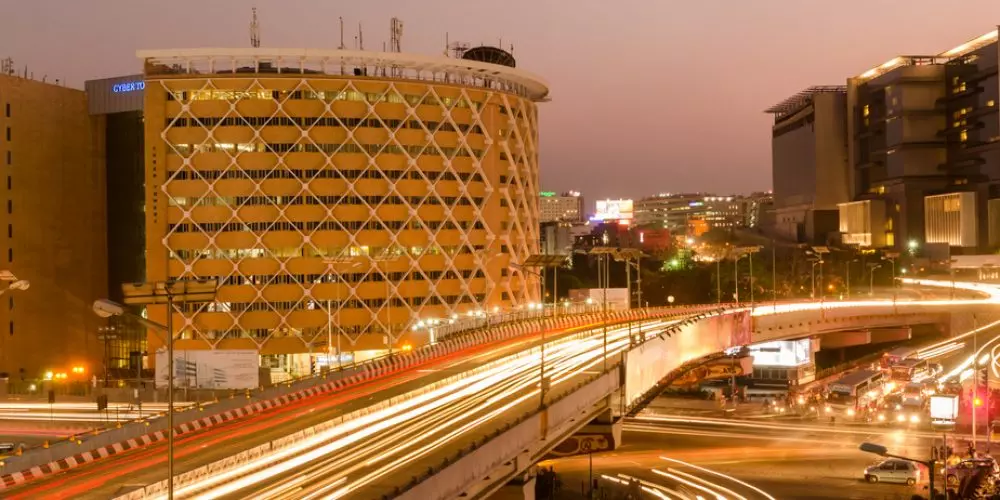The Incredible Opportunity for India
- 22 December 16

Introduction
In the last half century, India’s economy has been on a rollercoaster ride, with the turning point of economic liberalization taking off in 1991, and now 25 years later, India again stands at the top of the ride, slowly but surely continuing to climb up the next massive hill.
As India propels forward, at times, the changes are imperceptible to the untrained eye. According to Arvind Panagariya, former Director and Chief Economist at the Asian Development Bank, “India’s reforms have been piecemeal and incremental, giving the casual observer the impression that nothing has been happening. If one takes the totality of reforms over the last decade, however, the change is unmistakable.” Echoing Mr. Panagariya, India’s vigor and influence on the international economy has been, and continues to be, sorely underestimated. According to the World Economic Forum, as of November 2015, India accounted for 10 percent of the world’s increase in economic activity. Due in large part to the policies put in place by Prime Minister Narendra Modi, India now ranks 55th out of 140 measured economies, which is a 16-spot jump after five years of decline.
However, the country still faces systemic challenges that must be addressed so that it can remain on this upwards trajectory. Let’s take a 360-degree view into what the “new” India looks like based on the global and geopolitical factors that are shaping the country, as well as the businesses that India is home to.
Economic Prosperity and Collaboration
India’s macroeconomic conditions improved significantly during Raghuram Rajan tenure as the Central Bank Chief. Rajan entered at a trying time – the rupee was at an all-time low against the dollar, but he managed to steady the currency’s value. Now, India is considered the world’s “fastest-growing big economy” according to Bloomberg and as of April 2016, inflation was at a mere 5.4 percent, dropping from its former double-digit rate. The recent announcement of Rajan’s departure is certainly a concern, but the strides he made will have lingering ripple effects.
It’s easy to talk about a country’s economy in terms of percentages, but what’s more significant is discussing the how – as in, how India got where it is today on the global market spectrum. As such, Richard Verma, a newly appointed US ambassador to India, believes that the dialogue between the US and India is at an unprecedented place. This conversation extends well beyond even that of economic prosperity and collaboration – it touches on what is geopolitically significant in order to preserve democracy, freedom and liberty. Without these three pillars, an economy cannot flourish or even sustain on an international scale. This sentiment parallels PM Modi’s “pro-business, pro-growth, and anti-corruption” position that has improved the Indian business community’s outlook towards the government.
Democracy and Collaboration
While the U.S. has the world’s oldest democracy, India has the world’s largest democracy. Historically, there has always been a cultural curiosity between these two nations, beginning as a societal collaboration, then as a business relationship, and now as an inter-governmental alliance. As we continue to remove additional barriers between these two nations, we are presented with unprecedented opportunity. The combined power of the oldest and the largest democracies has the potential to bring global solutions to global problems, spanning peace, energy, environment, poverty, education or healthcare.
Today, the key to a successful geopolitical ecosystem is a solid network that is open and cooperative. The countries that understand the power of a networked economy don’t have walls up and therefore, are inherent risk takers. Taking risks is a vital step for increasing a country’s economic, political and social prosperity, so long as these risks are properly understood and then appropriately managed. Tactical risk-takers like PM Modi and Raghuram Rajan are driving superior, sustainable performance in India.
From Call Centers to Major Hubs of Technology Innovation
India built a reputation as the preferred location for companies to outsource their customer service call centers, due to inexpensive labor and cost-effective infrastructure. While true, call centers are a negligible piece of India’s booming technology scene. India is home to global companies like Tata Consultancy Services, Infosys, and Wipro.
According to the Global Startup Ecosystem Ranking by benchmarking company Compass, Bangalore is the #2 Startup Ecosystem in Asia and #15 in the world, and the cities of Pune, Hyderabad and Chennai are not far behind the curve. Bangalore has seen a fourfold rise in venture capital funds over the past year – indicative of a thriving startup scene.
What is the reason for this seismic shift? Experts speculate that one main catalyst is that talented Indian workers are not able to obtain U.S. work visas, so they are returning home and building their own companies from the ground-up. These individuals are quickly becoming powerhouse leaders and are singlehandedly lifting the Indian economy up and rivaling Silicon Valley as the world’s most competitive technology hub. In addition to the current workforce, India has 700 universities and more than 35,000 affiliated colleges with more than 20 million students. According to DrEducation.com, at least one-sixth of all Indian students are enrolled in engineering or technology degrees, adding to the potential of this growing, highly educated workforce.
Urbanization is another factor, as more and more people are moving into major Indian cities, again demonstrating the significance of certain geopolitical factors that are creating a new India.
Systemic Challenges
As with any growing market, India has systemic issues that need to be addressed so that the economy can continue expanding. First, there is a still a lack of formal education for a large swath of the population. This leads to poor working conditions, low-income levels and workforce inertia that hinders economic evolution. In order to combat this issue, the government launched the National Skills Mission that will aim to curate “job-ready youth” through teaching certain skillsets necessary to succeed across different sectors, such as infrastructure and manufacturing.
Additionally, poverty and corruption are still rampant in the country, and government corruption has been harder to eradicate than expected. As noted in The Economist, in a recent survey, 96 percent of Indians said corruption was holding their country back, and 92 percent believe it has gotten worse over the past five years. There is bribery, extortion and poor decision-making that unfortunately occur far too often. PM Modi’s reforms, which are aiming to counteract these instances, are still in the early stage as political, cultural and economic factors slow down progress. Regardless, improvements are still underway but progressing slower than desired.
The Opportunity Ahead
As we look ahead, it is important to also look back. Let’s not forgot how India leapfrogged the world in mobile usage, boasting the largest mobile-friendly population due to the sheer scarcity of landline infrastructure. Similarly, another incredible “leapfrog” opportunity lies in front of India.
India is no stranger to incidents of corruption, black money and systemic tax evasion. But by harnessing the power of fintech, and through the creation of the system of Universal Identity Number (UID), India has the opportunity to create the first truly cashless economy.
In a cashless economy, money moves freely and digitally from citizens, to businesses, and governments, ultimately creating greater transparency, while accelerating economic activity and raising GDP. The flow of money is in fact the biggest driver of GDP. At the precipice of such incredible transformation, India has the opportunity to leapfrog other more advanced economies, leveraging the power of fintech and moving forward with the creation of a universal identity system.
India is no doubt ripe with opportunity, full of brainpower, and home to incredible innovation. Through the ambition of PM Modi and the legacy of economic mastermind, Raghuram Rajan, the country has experienced a stabilized exchange rate, reduced inflation and has worked to combat inherent corruption within the political and social system. India’s strategic location, as well as its relationship with the US, provides it with the pieces it needs to become a recognized global superpower, so long as it remains on this progressive path. Continuing to turn out a highly educated, ambitious and upwardly mobile workforce will be key to accelerating the country’s growth and widening the middle class. And perhaps the greatest changes ahead will indeed come by harnessing the true power of technology to build a stronger economy, reduce corruption, and drive sustainable long-term growth.
Disclaimer: The original draft of this blog was published by The Huffington Post. You can view the full blog here.







